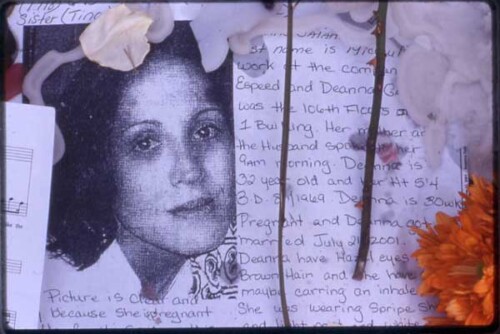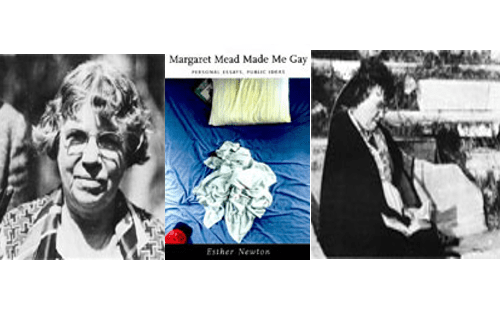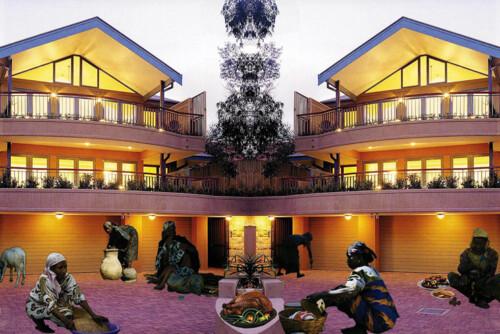Conclusion
The theater of the body that Cho’s live show campily stages also ghosts the abstract public sphere and its modes of ratiocination and political rectitude. For Cho, the abstract public sphere is best staged or apprehended not in the courtroom, nor in the halls of government, nor in the refinement of (both political and artistic) representation, but on the snowy white mountaintop of a ski slope, where a certain positioning of the body is itself abjected:
I was skiing in Deer Valley and there’s no people of color up there, and I’m up there, skiing, trying to fit in like an asshole, and I have an instructor and he goes [lowers her voice an octave] “Heyyy, don’t take this the wrong way, but you have a tendency to booowww [her mouth opens hugely, her lips contorting over the word] into your skis.”
Notably, Cho does not bow in this routine. Aside from one exception, she delivers this anecdote verbally not bodily, even as this vocal reference to the bow conjures up the many bodily postures she has inhabited throughout the performance. Here, the bow is both glaringly absent and present. But what’s the nature of the “something racial,” here?
For a brief moment on that mountain top, the Asian American performer appears to be enjoying the liberal promise of an abstract body (even though in the retrospective telling of the story, the absence of people of color in Deer Valley is upfront, hence, there is never really an abstract body for Cho on the hill). The bit seems to be offered as a critique of the way in which the recognition of race prevents Cho’s entitlement to an unconscious and shared investment in whiteness. However, it is important to note that the ski instructor doesn’t merely mark Cho by telling her that she bows, but marks the white space of the mountain top as segregated, as a space sealed off from minorities’ – but not white persons’ – discourse on race (the raising of/seeing of race, the practice of using race as informal or formal selection). Only Cho’s pedgagogy of the oppressed, her sensitization to historical relations of racial uneveness, is not allowed, or is framed as the noise in this communicative exchange between the white instructor and colored (exchange) student. In order to ski down and among snowy white surfaces, then, Cho will have to partition this knowledge – this racial education/testimony (diva citizenship) – off; she will have to laugh/smile more universally.
Still dramatizing the scene on the mountain top, Cho switches to an unhumorous face, brow furrowed, face pulled in close to the chin, lips pressed together firmly – holds this face, reminiscent of the one she mugs while impersonating her mother, and says, “Fuck you.” Loud applause and whistles come from the audience. The tag line is delivered, “And then I fell,” as Cho lifts one leg and arm up, gesturing her fall backward onto the powder.
Prone (flat on her back, rather than a bent/bowed forward) on that snowy white hill is where Cho leaves her body in this routine. This is the same position of Cho’s body in the hospital with Gwen hovering to “waaarsh” her vagina. In the contest of funny, Cho wins not by bowing more deeply, but by talking back in ire, and risking that subsequent ignoble position of specular (di)splay. This act of heroic pedagogy enacted by Cho operates through the juxtaposition of moral outrage (racial justice), and slippage into camp, with Cho showing us not that only angry, testimonial pedgagogy deserves our wonder but that in the camp of funny (in an anger that falls, but reveals historical and political knowledge in that splayed pratfall) there are many lessons to mine.
Works Cited
Armstrong, Nancy. 1987. Desire and Domestic Fiction: A Political History of the Novel. NY: Oxford UP.
Borns, Betsy. 1987. Comic Lives: Inside the World of American Standup Comedy. New York: Simon & Schuster.
Bushman, David. 1996. Standup Comedians on Television. New York: Harry N. Abrams Publishers.
Cho, Margaret. 2000. Margaret Cho, Filmed Live in Concert: I’m the One that I Want. Prod. by Lorene Machado. Cho Taussig Productions. NY: Winstar TV & Video, 2001.
—. 2001a. I’m the One that I Want. NY: Ballantine Books.
—. 2001b. “Notorious C.H.O.” Live performance at the Universal Ampitheater, September 13.
Foucault, Michel. 1979. Discipline and Punish: The Birth of the Prison. Trans. by Alan Sheridan. NY: Vintage.
Koziski, Stephanie. 1984. “The Standup Comedian as Anthropologist: Intentional Culture Critic.” Journal of Popular Culture 18.2 (Fall): 57-75.
Limon, John. 2000. Standup Comedy in Theory, or, Abjection in America. Durham, NC : Duke UP.
Mintz, Lawrence E. 1985. “Standup Comedy as Social and Cultural Mediation.” American Quarterly 37.1 (Spring): 71-80.
Stebbins, Robert. 1990. The Laugh-Makers: Standup Comedy as Art, Business, and Life-Style. Montreal: McGill-Queens UP.
Turner, Victor. 1982. From Ritual to Theater: The Human Seriousness of Play. N.p.: PAJ (Performing Arts Journal) Publications.
Watkins, Mel. 1994. On the Real Side: Laughing, Lying, and Signifying – The Underground Tradition of African-American Humor that Transformed American Culture, From Slavery to Richard Pryor. NY: Simon and Schuster.




